Irrational Chess
Irrational Chess is a 2-player chess variant introduced by Max Koval in 2023. The game is played on an unconventionally shaped board made of tetragons and uses an extended chess set with one additional pawn and bishop per side.
Setup

White: king f3; queen d2; bishop c2, e2, g3; knight b1, h3, rook a1, i3; pawn a2, b2, c3, d3, e3. f4, g4, h4, i5.
Black: king d8; queen f9; bishop c8, e9, g9; knight b8, h10; rook a7, i10; pawn a6, b7, c7, e7, d8, h8, g8, h9, i9.
The way coordinates work is shown below:

Pieces
Rook
The rook moves an arbitrary number of spaces in any orthogonal direction. This is movement in a periodic zig-zag alike line vertically, and in a straight line horizontally along a series of spaces connected by shared sides. When any two spaces share a common side, they are said to be orthogonally adjacent. The rook seems to have the most obvious way of movement, where every cell is followed by the next one from the previous cells' outer side.
On gray-colored cells, its movement remains the same except that there are no horizontal directions, instead all four directions are vertical, and all other rhomboid cells of the same column are attacked twice. For example on e7 in can move in both ways like d7, e8, f9, e9; or f8, e8, d8, e9; etc.
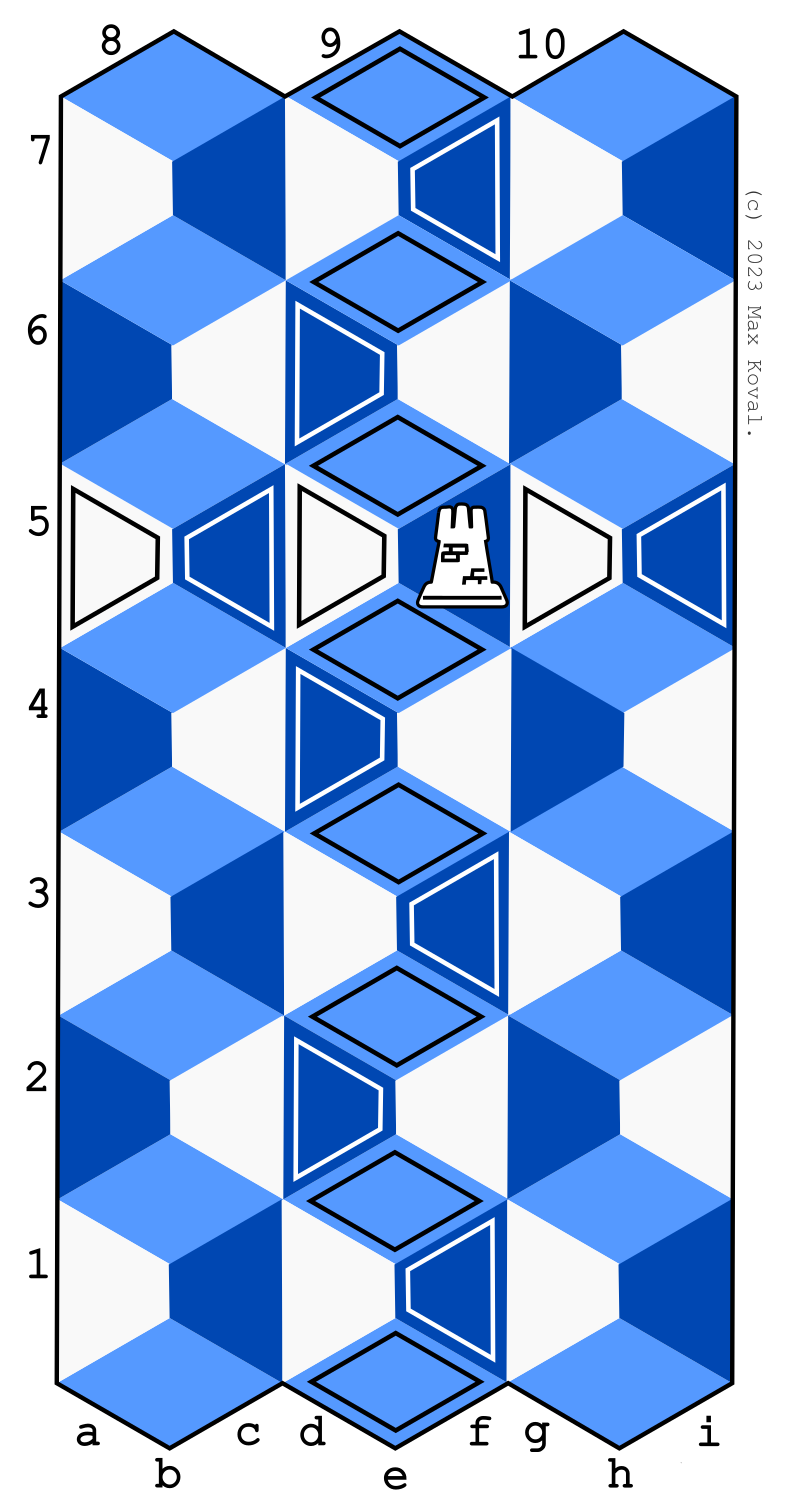
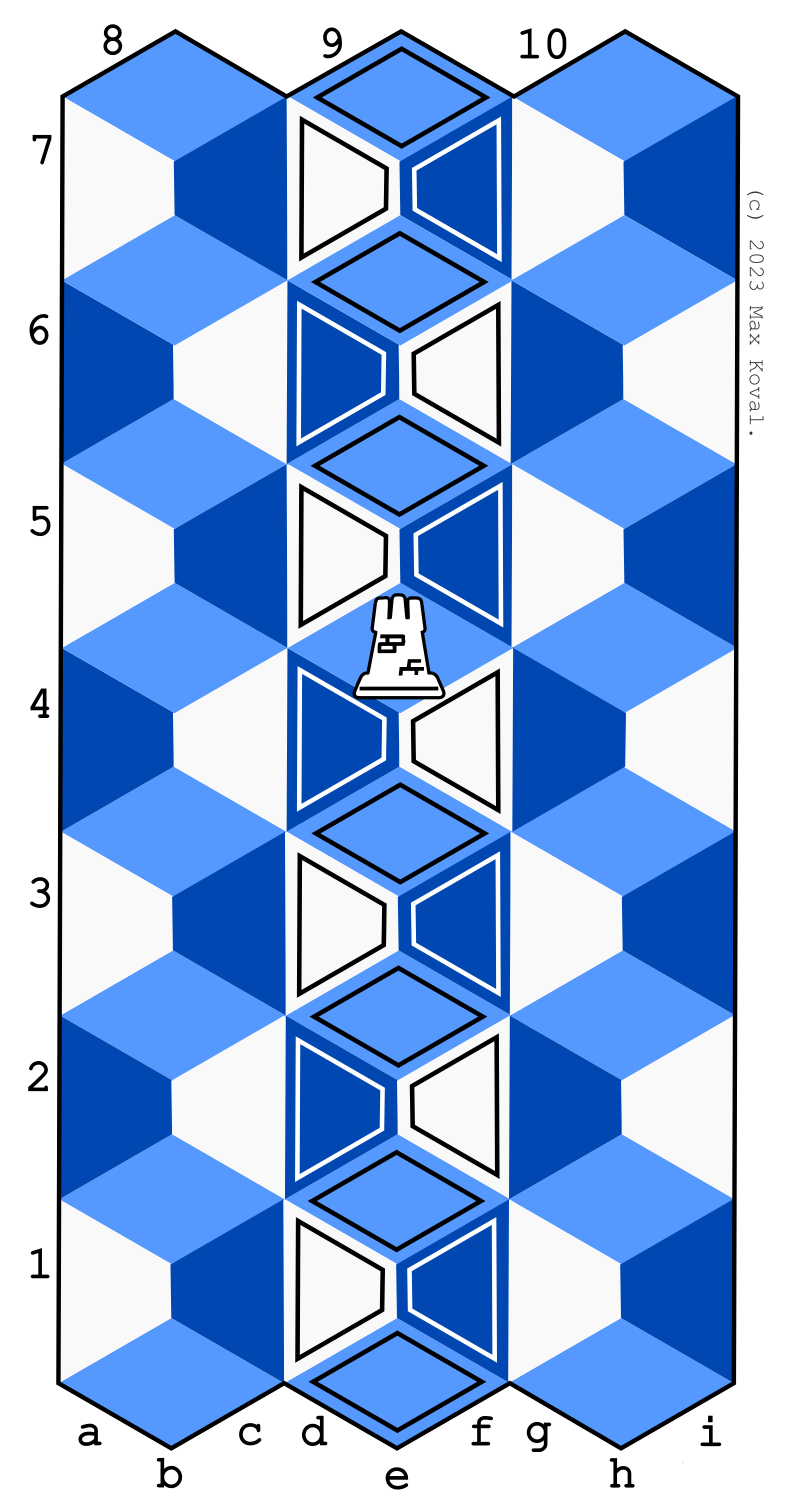
Bishop
Similar to the rook, but in any of four possible diagonal directions. On this board, the bishop intuitively has a variety of other ways to move, so I interpreted the simplest where it moves like a normal chess bishop if gray-colored cell would be excluded (left-up: c5, a5...; right-up: f6, g7, i9...; etc).
The gray-celled bishop moves like a regular chess bishop, except that the vertical cells are not visually connected to each other. For example on b5, it can move horizontally to e6 and h7; vertically it will be like b6, b7, and b8.

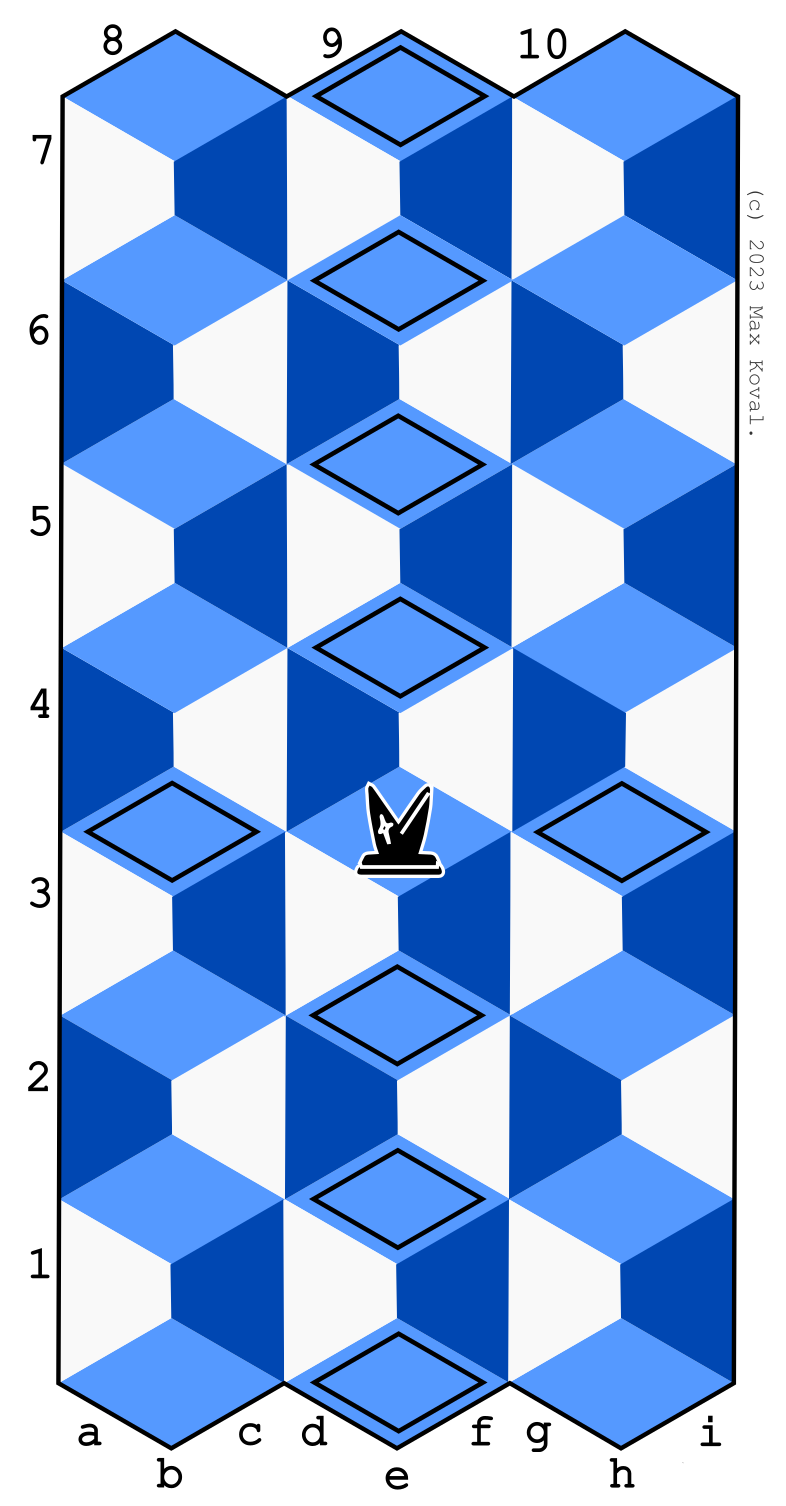
Queen
The queen moves like the rook and bishop combined.
King
The king moves like the queen, but in one cell in any direction only. Only short castling is possible: king f3-c2 and rook a1-d2; black: king d8-g9 and rook i10-f9.

Knight
The knight's move can be defined as one step in an orthogonal direction, and then one step diagonally in an outward direction. As in standard chess, the knight jumps, and the piece that is jumped over is further not affected by it.
On gray-colored cells, its movement idea remains the same: for example, knight e6 can move to c7, d7, f8 and g8.
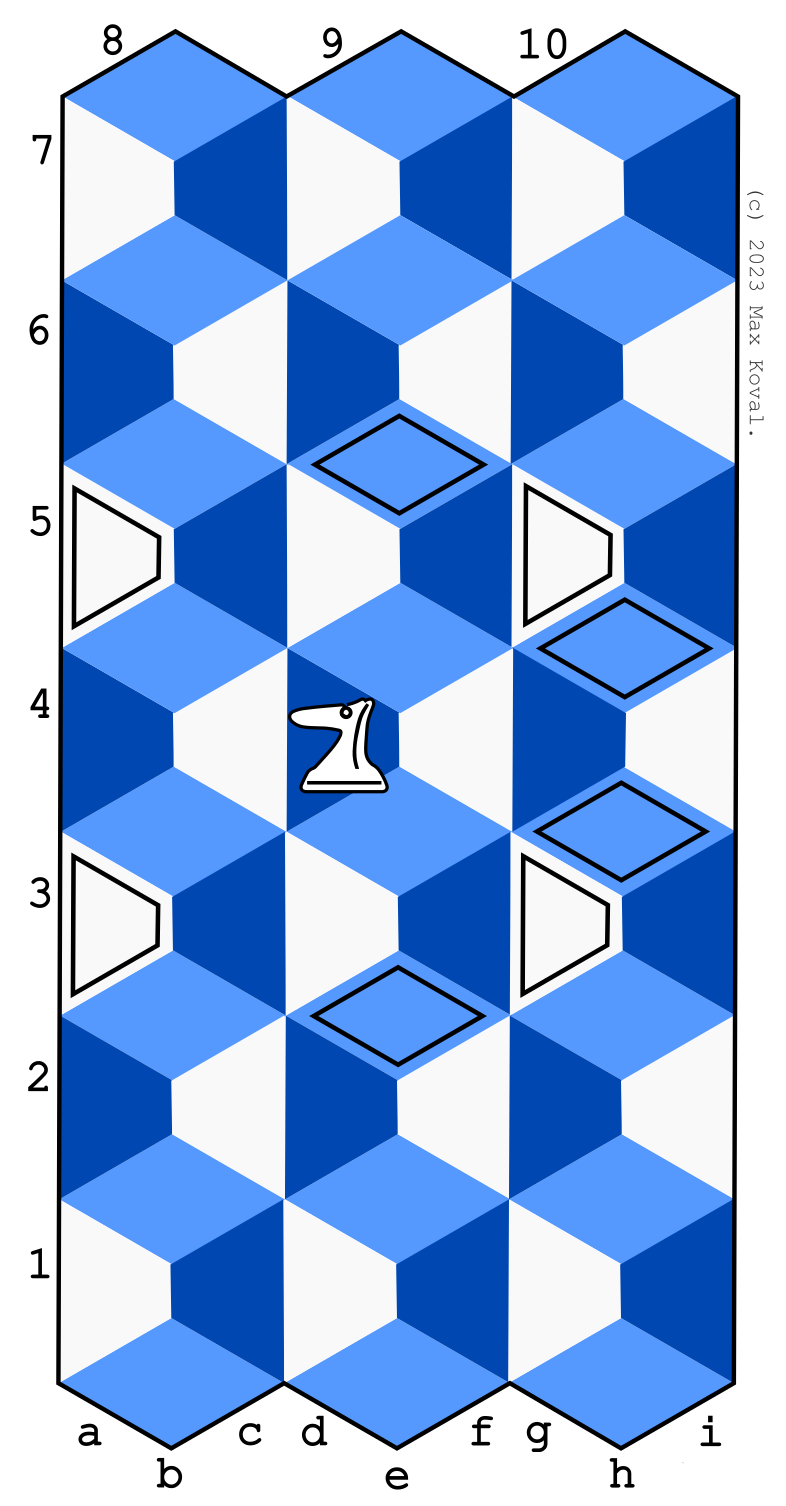
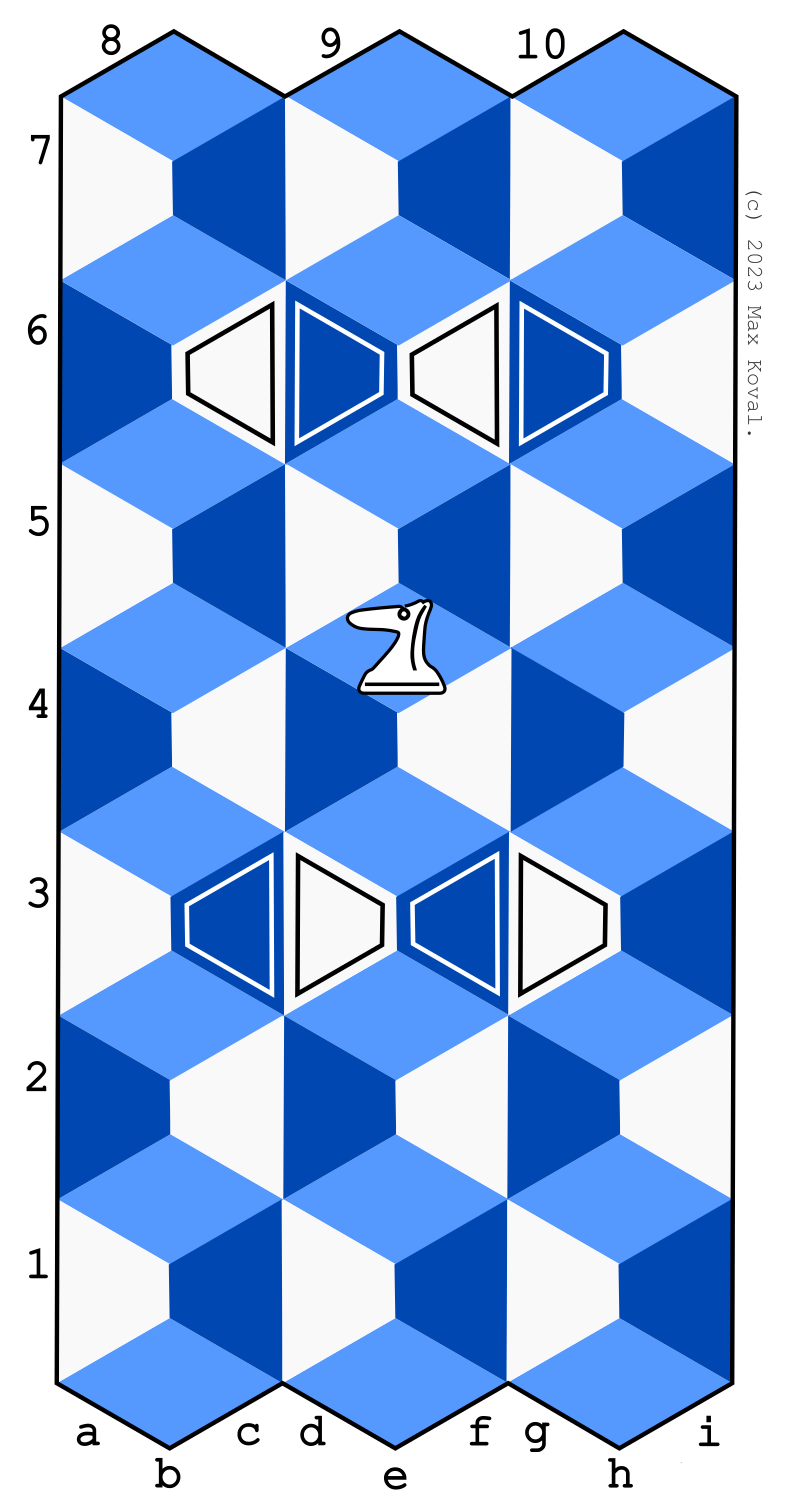
Pawn
The pawn's move may look differently depending on which cell it is currently placed; three different types of movement are shown below. Pawn c3 can passively move to h5, i6 (double step), and attack on f5 or i6; pawn c5 can passively move to b5 and attack on a5 or d5; pawn b2 can passively move to a2, c3 or b3 (double step), and attack on b3. If cells a2 and c3 are occupied by other pieces, pawn b2 cannot passively move to h3, but it still can attack it diagonally. En passant is possible.

Rules
With all the mentioned exceptions, other rules are the same as in orthodox chess.
Notes
Endgame
A king and its rook can easily checkmate a lone king; the rook by itself is capable to checkmate a king without assistance.
A king and its bishop cannot checkmate a lone king, since it is technically impossible. It is possible to checkmate a king using two or three bishops, but it is unknown if checkmate can be enforced.
A king and its knight cannot checkmate a lone king; two knights can checkmate a lone king but it is unlikely that checkmate can be enforced.
A king and its bishop and knight can checkmate a lone king but it is unlikely that checkmate can be enforced.
In some positions, it is possible for a king to lead its pawn to the promotion zone.
Scholar's Mate: 1.d4 f7 2.Qg5 Nd7 3.ih5 e7 4.Bi5 Nf8 5.Qxc7#.
Problems
Mate in 2 (w: Kc1; Qd4; Rg4. b: Kg8; Rf9; f7, h5);
Mate in 3 (w: Kf3; Ra1; Bb5; Ni6. b: Kh3; Qg9; Ri7; c4, h6);
Mate in 6 (w: Ke7; Ri4. b: Ka6; Qi10; Ri7; Bh7; Ne8; c7).
 This 'user submitted' page is a collaboration between the posting user and the Chess Variant Pages. Registered contributors to the Chess Variant Pages have the ability to post their own works, subject to review and editing by the Chess Variant Pages Editorial Staff.
This 'user submitted' page is a collaboration between the posting user and the Chess Variant Pages. Registered contributors to the Chess Variant Pages have the ability to post their own works, subject to review and editing by the Chess Variant Pages Editorial Staff.
By Max Koval.
Web page created: 2023-03-14. Web page last updated: 2023-06-22